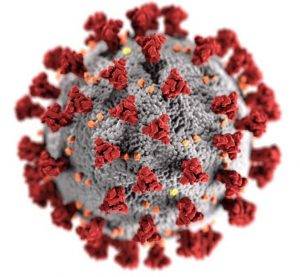The COVID-19 pandemic is an ongoing global pandemic caused by severe acute respiratory syndrome coronavirus 2 (SARS-CoV-2). As of 25 Jan 2022, more than 352 million people have been infected, with 5.6 million deaths from COVID-19.
Most people infected with this virus will experience mild to moderate respiratory illness and recover spontaneously with medications for symptomatic relief. However, some end up in hospitals or ICUs, requiring ventilation and specialised treatment.
For children, in particular, there has been much concern over the development of MIS-C, a hyper-inflammatory syndrome which occurs in a child two to eight weeks after COVID-19 infection, causing fever, inflammation, and multi-organ involvement.

What is MIS-C?
MIS-C is not a disease but a syndrome — a group of signs and symptoms, involving severe inflammation of multiple key organs like the heart, lungs, blood vessels, kidneys, brain and eyes. In May 2020, an international review from 26 countries reported an MIS-C incidence of 0.14% (14 in 10,000) among all children with COVID-19 infection.
US paediatrician Anna Sick-Samuels says:
‘The syndrome is an inflammatory reaction in the body about four weeks after infection with the SARS-CoV-2 virus. The initial symptoms often include fever, rashes, red eyes, diarrhoea and vomiting, and may get worse over a few days. The inflammation can affect the heart, blood vessels and other organs, which can make some children very ill and in need of urgent care.’
Very little is known about the exact cause of the syndrome so far as it is a new medical definition. In many communities, the number of MIS-C cases rises about 4 weeks after waves of COVID-19 cases. While no definitive explanation has yet been given for the link between COVID-19 and MIS-C, research is conclusive that MIS-C associated with COVID-19 infection can lead to severe and life-threatening illness in previously healthy children and adolescents.
What are the symptoms of MIS-C?
As MIS-C is a group of signs and symptoms which can involve multiple organs, exact symptoms vary between individuals, and may include:
- Continuous fever of more than 38 °C for 3 days
- Belly pain
- Vomiting or diarrhoea
- Rash
- Headache and confusion
- Neck pain
- Swollen armpit
- Swollen hands or feet
- Red eyes
If your child has one or more of the above symptoms, contact your doctor or go to the hospital immediately. MIS-C is considered a medical emergency and can result in death without timely treatment.
How is MIS-C diagnosed?
MIS-C has been shown to be similar to Kawasaki disease or toxic shock syndrome – both manifesting as multiple organ inflammation throughout the body. Various tests may be conducted to look for signs of inflammation:
- Blood tests and urine tests
- ECG
- Chest X-ray
- Ultrasound
How is MIS-C treated?
First of all, parents can rest assured that MIS-C is treatable. With timely diagnosis and treatment, children can expect to recover fully from the inflammation.
Common medications include intravenous immunoglobulin, steroids and other anti-inflammatory drugs to reduce inflammation and protect key organs from further inflammatory damage.
How is MIS-C prevented?
As the mechanism of how COVID-19 triggers MIS-C is unclear, preventing SARS-CoV-2 infection is the best bet for preventing MIS-C. Protective measures include:
- Observing good personal hygiene such as washing hands with soap and water
- Minimising social activities, especially in crowded places
- Avoiding contact with people who are sick
- Safe distancing (maintaining at least 1-metre distance between individuals)
- Donning masks
- Regularly disinfecting high-touch surfaces
- Getting the COVID-19 vaccination if eligible (for children 5 years old and above)
Conclusion
As prevention is better than cure, parents should ensure that children take care to observe the abovementioned safeguards. In addition, it may be prudent to monitor children for MIS-C for eight weeks from the diagnosis of COVID-19, as early detection and treatment of MIS-C generally result in good recovery.

